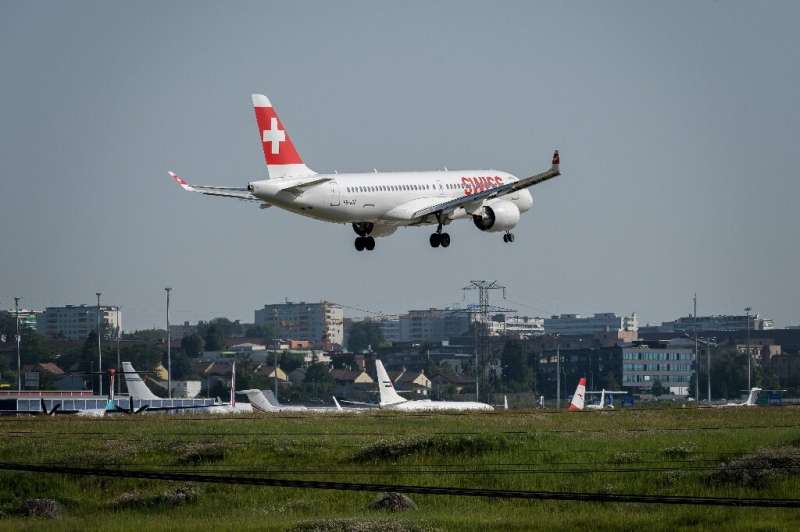Airbus A220s ordered to slow down over engine incidents

The Airbus A220 should no longer use full power at high altitudes, Canadian and European air safety regulators have announced following several incidents with their engines, including one in which pieces came off in-flight.
In an emergency airworthiness directive issued over the weekend by Transport Canada and also transmitted by the EU's Aviation Safety Agency (EASA) on Monday, airlines operating the aircraft are ordered to not exceed 94 percent of maximum output while above 29,000 feet.
The statement said the directive was issued following "several occurrences of engine in-flight shutdowns" with A220s operated by Air Canada, but there have also been several incidents with flights operated by Lufthansa's subsidiary Swiss.
During one Swiss flight parts of the engine fell over France, and following incidents in September and October the airline halted all flights with the aircraft until they could be inspected.
The aircraft was designed and originally built by Canada's Bombardier, but it had difficulty gaining enough orders.
It was subsequently bought out by Airbus, which has succeeded in getting airlines to place more orders for the aircraft, which offers similar fuel savings to the A320neo series but is somewhat smaller.
The greater fuel economy is in large part due to new engines manufactured by Pratt & Whitney.
While Canadian investigators are continuing to determine the root cause of the in-flight engine shutdowns, they said that "preliminary investigation results indicate high altitude climbs at higher thrust settings for engines with certain thrust ratings may be a contributor."
The directive warned that "this condition, if not corrected, could lead to an uncontained failure of the engine and damage to the aeroplane."
Furthermore, it urged airlines to avoid conditions where ice could build up on the aircraft and set a maximum altitude of 35,000 feet when they could not.
It said failure to turn off wing de-icing equipment "above 35,000 feet could result in engine nacelle overheating, and trigger engine fire warnings," it added.
© 2019 AFP





















